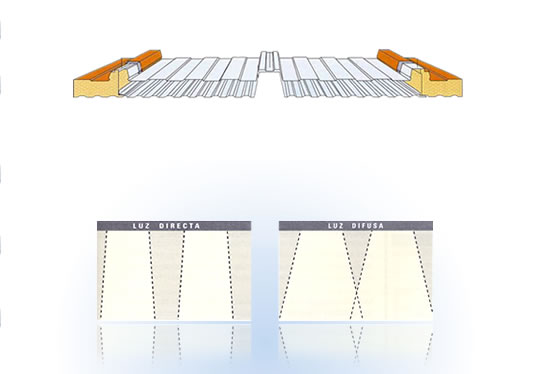
Skylights
Skylights are used to provide natural light to the interior of a facility making it possible to reduce the energy used for artificial lighting and heating.
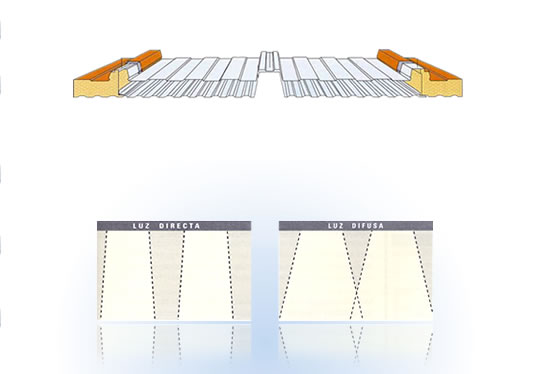
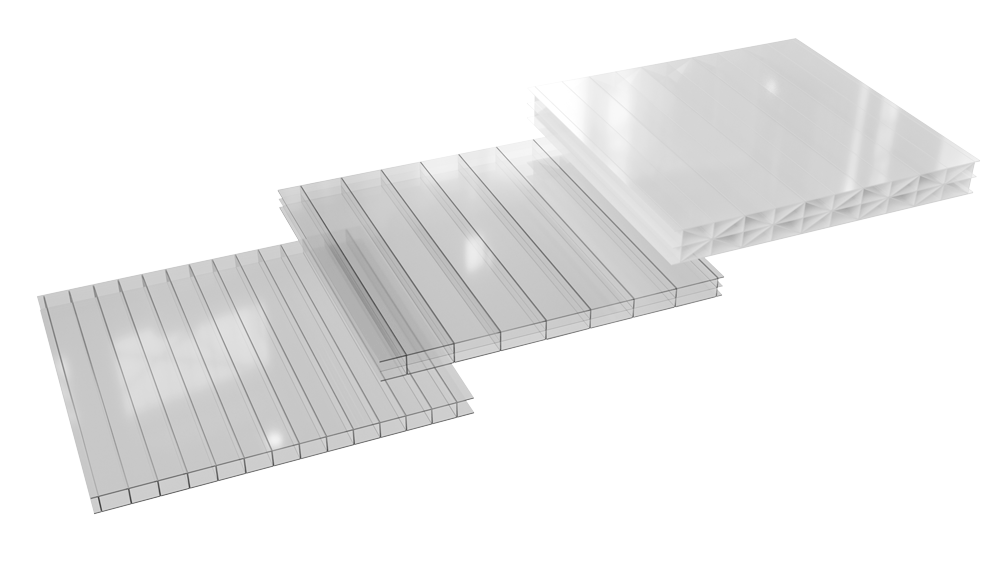
ACCESSORIES AND PROFILES
Cellular polycarbonate allows for an integrated system of natural lighting in interiors. The panels are made by joining several sheets following a hollow and corrugated inner structure. The thickness of the panels available is between 4 and 40 mm, depending on the model, without losing their lightness.
The handling and installation of this material is extremely simple. Its versatility allows a great variety of tasks to be performed with it, such as cutting, bending, nailing and much more, with great ease.
Different uses of cellular polycarbonate in construction:
Cladding and roofing: It is used to create transparent building envelopes, such as windows, skylights and skylights. It is also used in roof construction to provide protection against rain and solar radiation.
Facades and cladding: Cellular polycarbonate can be used as facade cladding, providing a modern look and allowing natural light to pass through.
Greenhouses and growing spaces: Due to its transparency and ability to filter UV radiation, cellular polycarbonate is ideal for the construction of greenhouses and agricultural structures, providing good lighting and plant protection.
Interior partitions and partitions: Cellular polycarbonate is used to create interior partitions in offices, commercial spaces and work areas. These partitions allow different areas to be visually separated without completely blocking natural light. Cellular polycarbonate, being transparent, allows light to diffuse evenly, creating a bright and pleasant atmosphere inside the spaces.
Cellular structure: The panel is composed of a structure of internal cells or cavities, which makes it lighter compared to other materials such as glass, without compromising its strength.
Transparency: Transparent cellular polycarbonate allows light and image to pass through, providing excellent natural lighting in interior spaces. Translucent cellular polycarbonate also creates well-lit interior spaces, providing privacy to the interior of the room.
Impact resistance: It is a highly impact resistant material. It is up to 200 times more resistant than glass, which makes it a safe and durable option for construction applications.
Thermal insulation: Cellular polycarbonate has thermal insulation properties, which means it helps maintain a more stable indoor temperature. This can contribute to energy efficiency and reduce heating and cooling costs.
Flexibility and ease of installation: The sheets can be easily cut and shaped to specific project requirements. In addition, their light weight makes them easier to handle and install compared to heavier materials.
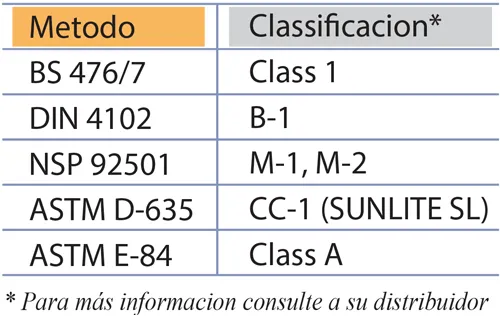
Polycarbonate panels have several advantages over glass in the construction field, especially in terms of strength, handling and price. These advantages are detailed below:
Strength: Polycarbonate panels are significantly stronger than glass. Polycarbonate is up to 200 times more impact resistant, making it ideal in applications where safety is paramount, such as in areas prone to shock, vibration or adverse weather conditions. Its impact resistance reduces the risk of breakage and injury, which is beneficial in terms of long-term durability and maintenance.
Handling: Polycarbonate panels are much easier to handle compared to glass. Polycarbonate is a lightweight and flexible material, making it easy to transport, cut and shape to specific project requirements. Unlike glass, which is fragile and requires careful handling, polycarbonate is more malleable, allowing for quicker and easier installation.
Price: In terms of cost, polycarbonate panels tend to be less expensive than glass panels. Glass, especially high quality and specialized glass, tends to have a higher cost due to its manufacturing process and specific characteristics, such as fire resistance or safety glass. In contrast, polycarbonate offers a more affordable alternative in terms of price, which can be an important consideration in projects with limited budgets.
It is important to note that the choice between polycarbonate and glass panels will depend on the specific needs and requirements of each project. While glass may offer aesthetic advantages or superior optical properties in certain cases, polycarbonate panels are a popular choice due to their strength, ease of handling and lower cost in many building applications.
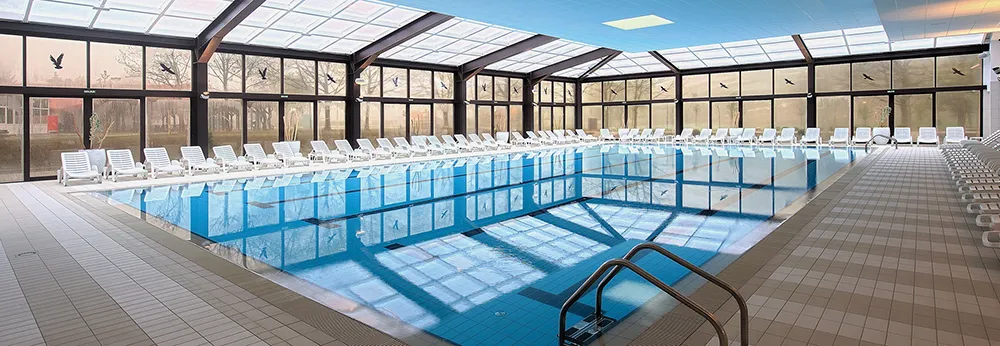
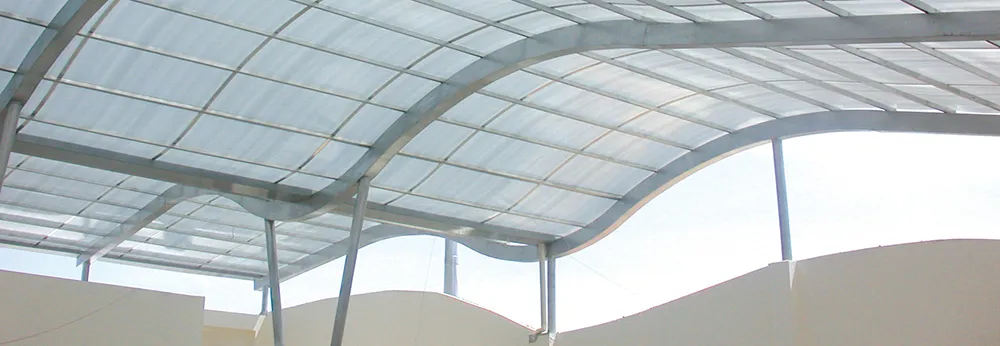

Skylights are used to provide natural light to the interior of a facility making it possible to reduce the energy used for artificial lighting and heating.
© DIPPANEL
Distribution of Doors and Panels, S.L.
Avda. de los Dólmenes, 6
41907 - Valencina de la Concepción
(Seville)
Teléfono: (+34) 954 436 422
Móvil: (+34) 675 534 289
[email protected]

An incentive has been received from the Innovation and Development Agency of Andalusia IDEA, of the Regional Government of Andalusia, for an amount of Nineteen thousand twelve euros and fifty cents (19,012.50€), 80% co-financed by the European Union through the European Regional Development Fund, ERDF for the implementation of the project “Digitalization of warehouse management, manufacturing and Web Sales” with the objective of “Ensuring a better use of information technologies”.

DISTRIBUCION DE PUERTAS Y PANELES SOCIEDAD LIMITADA, CIF B91742627, has received a grant from the European Union under the Andalusia ERDF Operational Program 2014-2020, funded as part of the Union’s response to the COVID-19 pandemic (REACT-EU), to compensate for the extra energy cost of natural gas and/or electricity to SMEs and the self-employed especially affected by the increase in natural gas and electricity prices caused by the impact of Russia’s war of aggression against Ukraine.
Distribuciones de Puertas y Paneles, S.L. has been a beneficiary of European Funds, whose objective is to strengthen the sustainable growth and competitiveness of SMEs, and thanks to which it has launched an Action Plan with the aim of improving its competitiveness through digital transformation, online promotion and e-commerce in international markets during the year 2024. To this end, it has had the support of the Xpande Digital Program of the Chamber of Commerce of Seville. #EuropeFeels
